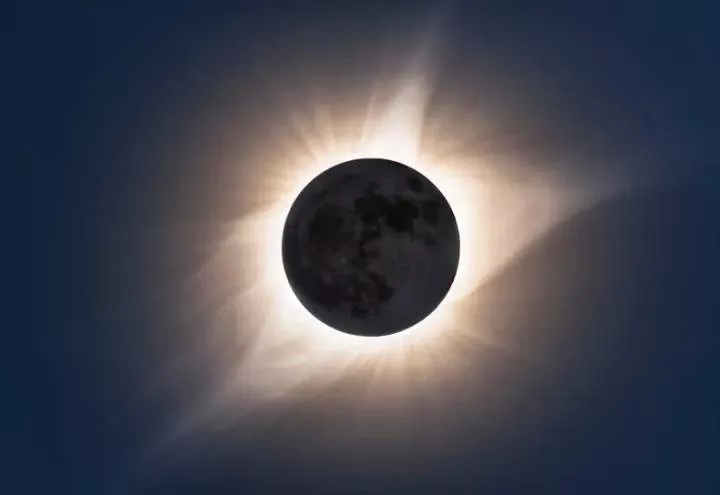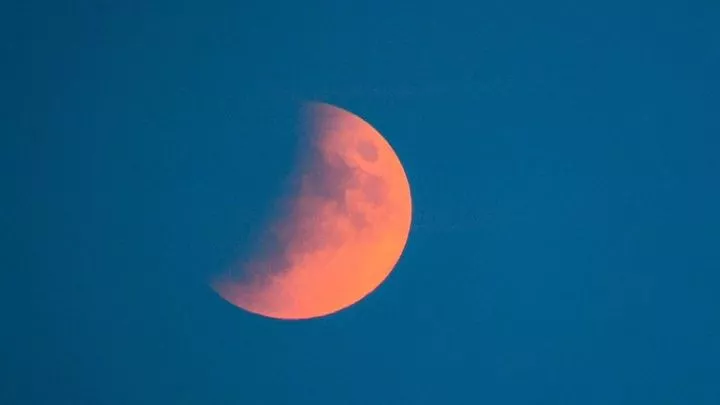![The eclipse will begin in the Pacific Ocean near the Kiribati islands [Matt Anderson Photography/Getty Images] The eclipse will begin in the Pacific Ocean near the Kiribati islands [Matt Anderson Photography/Getty Images]](https://static.netnaija.com/i/yZaJbpy9aJ0.webp)
Mexico, the United States and Canada will be able to observe a total solar eclipse on April 8.
The total eclipse phase will last about 4.5 minutes, which is a real treat for astronomy enthusiasts.
The eclipse will begin in the Pacific Ocean near the Kiribati islands. A few minutes after 12 pm local time, you will be able to observe them from Mexico. After 1:30 pm, it will appear over Texas, USA, and then in other US states, including Oklahoma, Arkansas, Missouri, Kentucky, Illinois, Indiana, Ohio, Pennsylvania, New York State, Vermont and Maine. It will then be visible along the Canadian border.
As Damian Jabłeka, deputy director of the Silesian Planetarium, tells Science in Poland, the next solar eclipse will be a real treat for astronomy lovers, including due to its length. "The phase of total eclipse will last approximately 4.5 minutes in Mexico, slightly shorter in the USA and will shorten on the way to Canada, where it will last 3.5 minutes," describes the expert.
An even more interesting and longer eclipse will occur in 2027 - it will pass through the northern part of Africa, including Egypt. "The maximum of the eclipse will be visible mainly on the Nile. There, the maximum phase of the eclipse will last as long as 6.5 minutes," he announces.
The length of the eclipse depends on the ratio of the distances of the moon and the sun from the place of observation. "When the moon is closest to the Earth, i.e. it appears to be the largest in the sky and the Earth is farthest from the sun, then it will have a larger disk than the sun's and will cover the star for longer," describes Jabłeka.
This year's eclipse will also be spectacular because when it is completely obscured, it will be possible to see virtually all the planets visible to the naked eye.
"When the sun is covered by the moon, Venus will be visible on the right side, west of the sun. It will reach magnitude 4, i.e. it will be a very bright point in the sky. On the other side, twice as far away as Venus will be Jupiter, shining only a little dimmer. At a similar distance to Jupiter, but on the side of Venus, Mars and Saturn will also be visible - close to each other. Mercury will also be visible nearby," describes the interlocutor of Nauka w Polsce.

Solar eclipses can occur when the moon comes between the Earth and the sun and completely or partially covers the solar disk. In this configuration, the moon is in a new moon, but not every new moon sees an eclipse, because the orbit of the Earth's natural satellite is slightly tilted relative to the plane of our planet's orbit and the moon in the sky is usually above or below the solar disk.
Total eclipses are the most spectacular, but - unfortunately - they are visible only in a quite narrow band with a maximum width of 270 km, on average it is about 100 km. Further away from it, only a partial eclipse is visible.
For any given point on Earth, total eclipses are very rare. People who will have the opportunity to watch the eclipse live should remember to prepare appropriately. Ordinary sunglasses are not enough.
Looking directly at the sun can seriously damage your eyesight. There are, for example, special glasses with a certified filter for observing solar eclipses available on the market, and Mylar solar filters can also be used. However, the safest method is to project the image of the sun onto a screen using, for example, a telescope or binoculars.
Nigerians will not witness the total eclipse that will pass primarily through North America. For countries who will miss it, US agency, the National Aeronautics and Space Administration (NASA), has set up a livestream.
















Comments